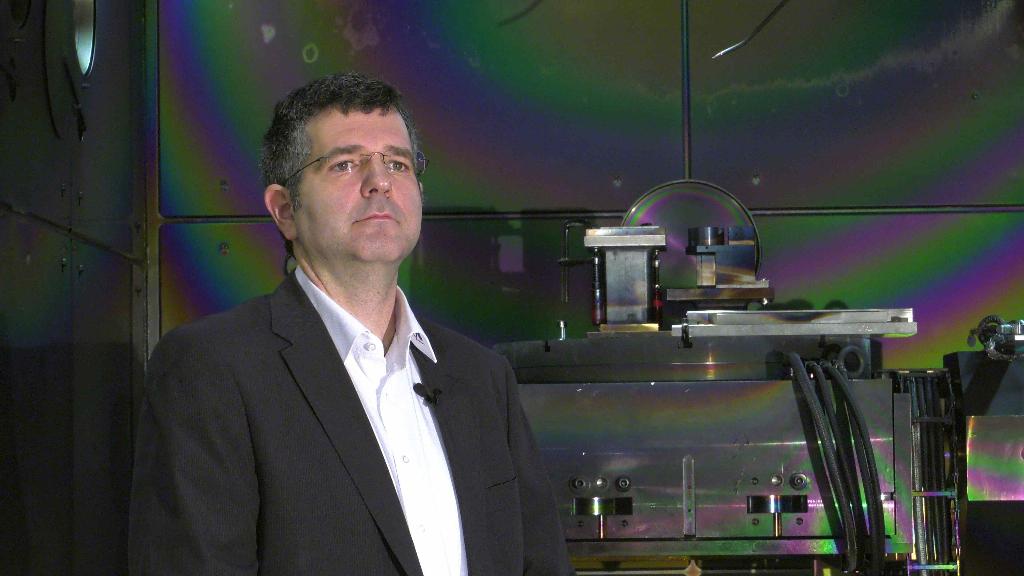Prototyping on demand

In a Q&A session, electron beam (EB) specialist Steigerwald Strahltechnik (SST) head of development, Dr Michael Maaßen discusses the company’s EBOADD 3D metal printing process.
In a Q&A session, electron beam (EB) specialist Steigerwald Strahltechnik (SST) head of development, Dr Michael Maaßen discusses the company’s EBOADD 3D metal printing process.
Q) For some time now, your company has been pushing a new, highly innovative technology which is referred to as the EBOADD process. What exactly is behind EBOADD?
EBOADD, a technology of ‘Electron Beam Additive Manufacturing’, is a process developed by SST which makes it possible to produce highly complex, metallic workpieces in a single process step, in a cost-effective and flexible manner. Put simply, EBOADD is a 3D metal printing process that involves building up metallic components layer by layer from wire material, or material with a powder base, using the EB technology.

A particular benefit of this process is that different components can therefore be produced from weldable materials whereas the production of such components would be very costly and/or time-consuming in conventional metal processing. This is the case, for instance, when manufacturing individual parts for which a new tool set would have to be purchased but the investment would not be profitable due to the low quantity.
Q) So the principle is similar to that of a 3D plastic printer?
The basic principle, yes, although the process technology in detail of course is very different. With the EBOADD process, a molten metal is applied in layers on a base plate. The first layer is welded to the base plate and the subsequent layers are then built up on top of it. In the process, the metal substance is conveyed in wire form into the melting zone by a wire feeding device and then fused by the electron beam.
The application in layers follows a trajectory, i.e. a defined path of movement which reproduces the outer contour of the component. If necessary, the constructed contour can of course also be filled with wire material. The component is built up in multiple layers placed on top of each other.
If a workpiece produced in this manner requires further machining, the required machining allowance can be adjusted easily and precisely. This way, what is referred to as the buy-to-fly ratio, i.e. the ratio of material used to material loss from machining, can be optimised, in particular when using expensive materials.
Q) What energy source is used for the EBOADD process?
The workpiece is built up in a Steigerwald Strahltechnik electron beam chamber machine. The efficient energy source is an electron beam which is generated by a high-powered generator unit from the EBOGEN series. These EB generators are mobile and facilitate power flux densities of up to more than 107W/cm2. As already mentioned, the electron beam fuses the source material, facilitating the continuous build-up. Given that the entire process is carried out in a vacuum, it can be used to achieve very high build-up speeds, alongside the other benefits it offers.
Q) You already mentioned that the process itself is carried out in a Steigerwald Strahltechnik electron beam chamber machine. How much flexibility is there with regard to the sizes of workpieces?
Electron beam chamber machines from the EBOCAM series which have been specially equipped for the EBOADD process are used. This type of machine is very flexible when it comes to possible chamber sizes. An EBOCAM large chamber machine with a chamber volume of 50m3 is therefore ideally suited for EBOADD production of large volume components.
Q) Finally, let’s talk about the areas of application. What do you consider these to be and in which sectors?
We have identified the main areas of application in sectors which are highly technological. These are innovative and forward-thinking companies or institutions dealing with new key technologies. In this field, there is a great deal of interest in making sure that technologies, applications and products are ready for series production as quickly as possible. That’s why the focus is often on the engineering of prototypes and small batches.

In sectors such as aerospace engineering, e-mobility, in renewable energies or even in classic mechanical and plant engineering, the additive EBOADD production therefore makes for the shortest possible development times because innovations can be tested, improved and prepared for series production more quickly. The EBOADD process offers ideal design flexibility to the users – new material combinations with new integrated functions and the optimisation of material properties are also possible.
When it comes to new developments or further development, the factors of time and cost reduction play a major role. EBOADD can have a positive effect on the overall process in this area too. For one, thanks to the elimination of expensive tools and a very good buy-to-fly ratio, and also thanks to very short lead-times made possible by direct data processing from the customer’s CAD applications – this makes genuine prototyping on demand possible.











